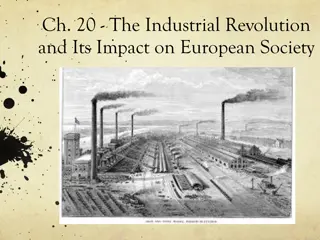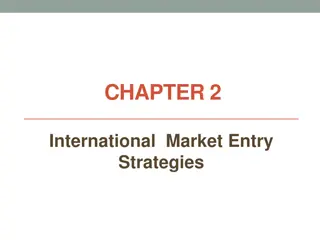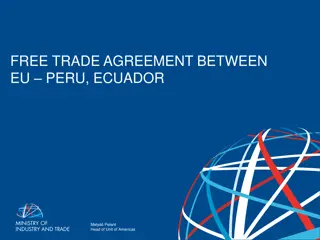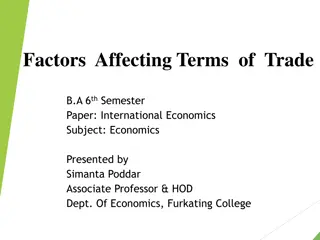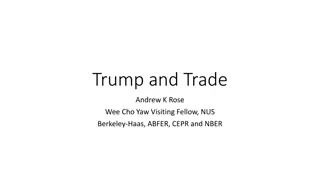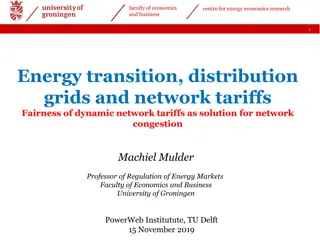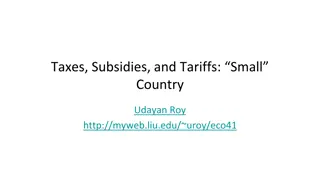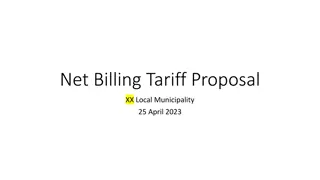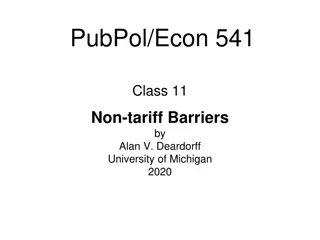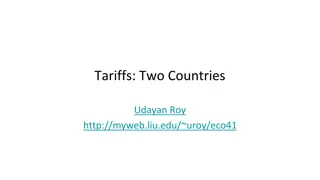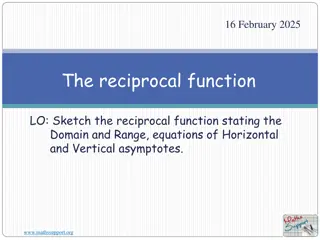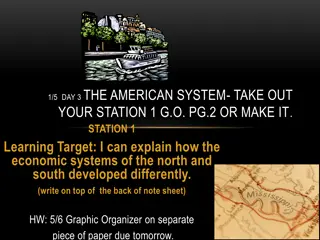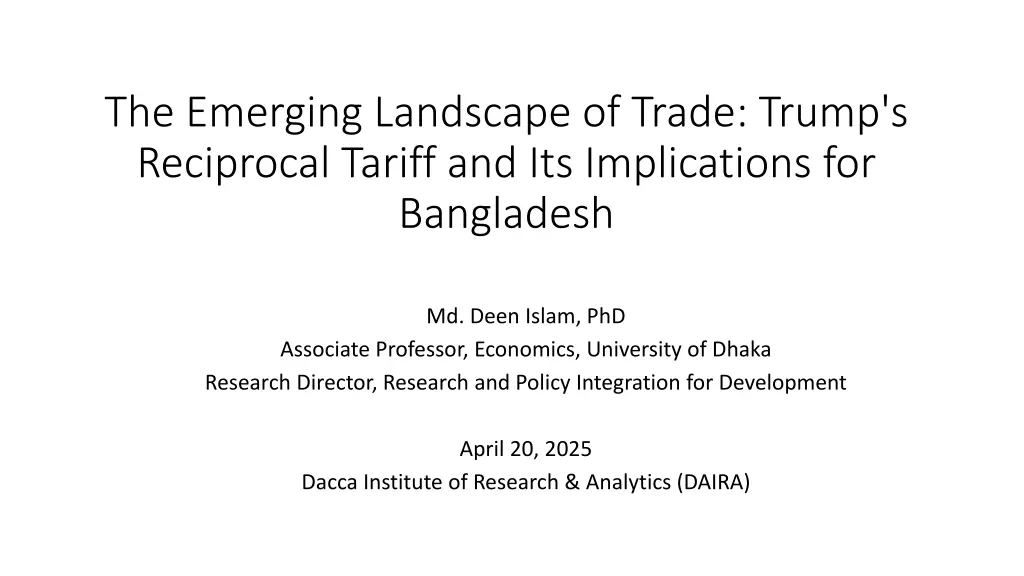
Implications of Trump's Reciprocal Tariff on Bangladesh's Trade Landscape
Explore the impact of Trump's Reciprocal Tariff on Bangladesh's trade dynamics, focusing on its largest export market, the United States. Discover how this policy shift affects macroeconomic stability and the rule-based trading system under the WTO. Uncover the ad hoc nature of the Reciprocal Tariff formula and its implications for bilateral trade relationships.
Download Presentation

Please find below an Image/Link to download the presentation.
The content on the website is provided AS IS for your information and personal use only. It may not be sold, licensed, or shared on other websites without obtaining consent from the author. If you encounter any issues during the download, it is possible that the publisher has removed the file from their server.
You are allowed to download the files provided on this website for personal or commercial use, subject to the condition that they are used lawfully. All files are the property of their respective owners.
The content on the website is provided AS IS for your information and personal use only. It may not be sold, licensed, or shared on other websites without obtaining consent from the author.
E N D
Presentation Transcript
The Emerging Landscape of Trade: Trump's Reciprocal Tariff and Its Implications for Bangladesh Md. Deen Islam, PhD Associate Professor, Economics, University of Dhaka Research Director, Research and Policy Integration for Development April 20, 2025 Dacca Institute of Research & Analytics (DAIRA)
The United States is Bangladesh's single largest export market The United States is Bangladesh's single largest export market Source: OEC, 2023.
Bangladeshs exports to the US have achieved a new level Bangladesh s exports to the US have achieved a new level after the COVID after the COVID- -19 pandemic 19 pandemic
Exports from Bangladesh to the United States in 2023 Exports from Bangladesh to the United States in 2023
The US Market is crucial for Macroeconomic Stability in Bangladesh The US Market is crucial for Macroeconomic Stability in Bangladesh
Trumps so Trump s so- -called Reciprocal Tariff is a blow to the rule called Reciprocal Tariff is a blow to the rule- -based trading system under the WTO trading system under the WTO based
The Reciprocal Tariff formula is ad hoc in nature ??= Change in tariff rate for country i ??= US export to country i ??= US import from country i = Price elasticity of import demand ? = Elasticity of import prices with respect to tariffs.
The parameter values used are not supported by The parameter values used are not supported by empirical evidence empirical evidence The Trump administration set = 4 and = 0.25, then multiplied them for = 1, which resulted in no change except to make the result positive when was multiplied Empirically, is found to be close to 1 not 0.25 (0.945, according to AEI). Using the correct value of would have resulted in one-fourth of the proposed tariffs. US Reciprocal Tariffs have nothing to do with other countries tariffs on US exports; rather, it is based on the trade deficit with the US.
The formula the administration relied on has no foundation in The formula the administration relied on has no foundation in either economic theory or trade law either economic theory or trade law
Reciprocal tariff rates for Bangladesh and its Reciprocal tariff rates for Bangladesh and its competitors in the US market competitors in the US market
US so US so- -called Reciprocal Tariffs can induce called Reciprocal Tariffs can induce macroeconomic instability in Bangladesh macroeconomic instability in Bangladesh Bangladesh s garment exporters are at risk. US shoppers may buy fewer clothes as it will become expensive, shrinking the overall size of the market. Higher tariffs on competitors like China and Vietnam can help gain some additional market share in the US, but Bangladesh could face greater competition from these competitors in the EU markets. Bangladesh may also face currency pressure, straining reserves and fiscal space. Women and informal workers in RMG are most vulnerable.
What are the policy tools available for Bangladesh What are the policy tools available for Bangladesh to tackle this situation to tackle this situation
Final thought The US reciprocal tariff strategy presents both risks and opportunities. Bangladesh must adopt a forward-looking, diversified export strategy. Smart diplomacy, structural reform, and private sector innovation are key. Being prepared will determine whether Bangladesh is sidelined or elevated in the new trade regime.


